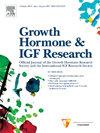注射表达生长激素和IGF1的慢病毒载体可增加雄性大鼠的体重和肌肉质量
IF 1.6
4区 医学
Q4 CELL BIOLOGY
引用次数: 0
摘要
本研究的目的是通过慢载体介导C2C12细胞间接增加大鼠肌肉中生长激素(GH1)和胰岛素样生长因子-1 (IGF1)的水平,并比较它们对肌肉质量的影响。合成GH1、IGF1和GH1-IGF1编码序列,通过2a自裂肽连接,实现多顺反子表达,克隆并插入pCDH载体。在HEK293T细胞中产生了含有我们的靶基因的重组假病毒。用伪慢病毒转导C2C12细胞,通过对嘌呤霉素耐药筛选。RT-PCR和Western blotting分别检测GH1和IGF1基因在mRNA和蛋白水平上的表达。将重组伪慢病毒和转导的C2C12细胞注射于8周龄大鼠胫骨前肌、腓肠肌和股四头肌群。注射后8周,每周测量大鼠体重。8周后还测量了腿部重量和肌肉组织学。结果显示,GH1和IGF1基因在C2C12细胞中mRNA和蛋白水平表达。8周后,直接或间接通过C2C12细胞增加的两种激素增加了动物的体重、腿重和肌肉纤维大小。IGF1的直接和间接传递比GH1的直接和间接传递更能增加体重、腿重和肌纤维大小。8周后,直接转移组的体重明显大于间接转移组。我们在大鼠模型中证明了GH1的非垂体分泌模拟了垂体GH1的一些生理作用。需要进一步研究GH1和IGF1基因的额外拷贝在较长时间内对其他组织的其他可能影响。本文章由计算机程序翻译,如有差异,请以英文原文为准。
Injection of lentiviral vectors expressing GH and IGF1 increases body and muscle mass in male rats
The aim of this study was to increase growth hormone (GH1) and insulin-like growth factor-1 (IGF1) levels in rat muscle indirectly through the transduction of C2C12 cells via lentivectors and to compare their effects on muscle mass. The coding sequences of GH1, IGF1, and GH1-IGF1, linked by the 2 A self-cleaving peptide to enable polycistronic expression, were synthesized, cloned and inserted into the pCDH vector. Recombinant pseudolentiviruses containing our target genes were produced in HEK293T cells. C2C12 cells were transduced with pseudo lentiviruses and selected through resistance to puromycin antibiotics. The expression of the GH1 and IGF1 genes at the mRNA and protein levels was verified by RT–PCR and Western blotting, respectively. The recombinant pseudo lentiviruses and transduced C2C12 cells were injected into the tibialis anterior (TA), gastrocnemius and quadriceps muscle groups of eight-week-old rats. The body weights of the rats were measured weekly for eight weeks after the injection. The leg weight and histology of the muscle after eight weeks were also measured. The results revealed the expression of the GH1 and IGF1 genes at the mRNA and protein levels in C2C12 cells. An increase in both hormones, either directly or indirectly through C2C12 cells, increased the animal body weight, leg weight, and muscle fibre size after eight weeks. The direct and indirect transfer of IGF1 increased body weight, leg weight and muscle fibre size more than did the direct or indirect transfer of GH1. In the direct transfer groups, the body weight was greater than that in the indirect transfer groups after eight weeks. We demonstrated that nonpituitary secretion of GH1 mimicked some physiological effects of pituitary GH1 in a rat model. Further investigations are needed to study other possible effects of extra copy of GH1 and IGF1 genes over a longer period on other tissues.
求助全文
通过发布文献求助,成功后即可免费获取论文全文。
去求助
来源期刊

Growth Hormone & Igf Research
医学-内分泌学与代谢
CiteScore
3.30
自引率
0.00%
发文量
38
审稿时长
57 days
期刊介绍:
Growth Hormone & IGF Research is a forum for research on the regulation of growth and metabolism in humans, animals, tissues and cells. It publishes articles on all aspects of growth-promoting and growth-inhibiting hormones and factors, with particular emphasis on insulin-like growth factors (IGFs) and growth hormone. This reflects the increasing importance of growth hormone and IGFs in clinical medicine and in the treatment of diseases.
 求助内容:
求助内容: 应助结果提醒方式:
应助结果提醒方式:


